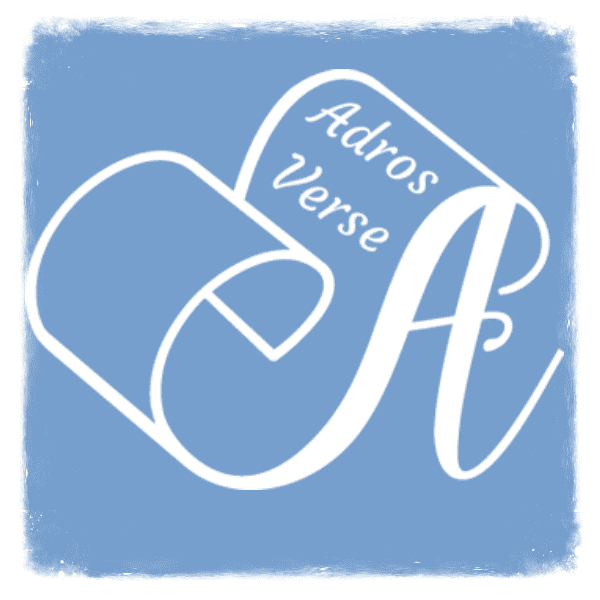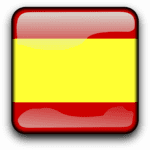1. Alphabet & Pronunciation
1.1. Syllable Stress
2. Similarities to English
2.1. Plural
2.2. Negation
2.3. Punctuation & Written Accents
3. Cardinal Numbers
4. Subject Personal Pronouns
5. Present Indicative Tense I
6. The Articles
7. Prepositions
8. Interrogative Pronouns & Adjectives
9. Basic Phrases
1. Gender of Nouns & Adjectives
2. Present Indicative Tense II – Irregular Verbs
3. The Verb “To Be”: “Ser” vs. “Estar”
4. Future Tense
5. Possessive Adjectives & Pronouns
6. Demonstrative Adjectives & Pronouns
7. Object Personal Pronouns
7.1. Combining Direct & Indirect Object Personal Pronouns
8. Relative Pronouns
9. Ordinal Numbers I
10. Times & Seasons
1. Verbs Like “Gustar”
2. “Por” vs. “Para”
3. The Verb “To Know”: “Saber” vs. “Conocer”
4. Indefinite Adjectives & Pronouns
5. Present Progressive Tense
6. Present Perfect Tense
7. Special Uses of “Haber” & “Tener”
8. Telling Time & Describing Weather
9. Adverbs
9.1. The Adverbs “Tan,” “Solo,” “También,” “Tampoco,” “Vez,” & “Veces”
9.2. Other Adverbs & Adverbial Phrases
10. Directions
1. Degrees of Comparison: Comparatives & Superlatives
2. Past Tense: Preterite vs. Imperfect
3. Conjunctions
4. Reflexive Pronouns & Verbs
5. The Verb “Soler”
6. Time Expressions: Todavía, Aún, Ya, Hace, Acabar, & Desde
7. Present Subjunctive Tense I
8. Personal “a”
9. Future Perfect Tense
1. Irregular Verbs in The Preterite
2. Imperative Mood & Giving Commands
3. Expressions of Pain & Illness
4. Simple Conditional Tense
5. Present Subjunctive Tense II
6. Perfect Subjunctive Tense
7. Imperfect Subjunctive Tense
8. Past & Conditional Progressive Tenses
9. Interjections
1. Ordinal Numbers II
2. “Would/Should/Could Have …”
3. Pluperfect Indicative Tense
4. Pluperfect Subjunctive Tense
5. Use of “Aunque,” “Si Bien,” and “A Pesar de”
6. Verbs of Change
7. Reflexive Passive, Impersonal, & Accidental “Se”
8. Diminutives & Augmentatives
9. Use of “Vos” in Some Spanish-Speaking Countries
10. Uses of “Ojalá” in Spanish
Ordinal numbers between 11 and 19 in Spanish are as follows:
| once | 11 | undécimo, undécima | 11.o / 11.a |
| doce | 12 | duodécimo, duodécima | 12.o / 12.a |
| trece | 13 | decimotercero, decimotercera | 13.o / 13.a |
| catorce | 14 | decimocuarto, decimocuarta | 14.o / 14.a |
| quince | 15 | decimoquinto, decimoquinta | 15.o / 15.a |
| dieciséis | 16 | decimosexto, decimosexta | 16.o / 16.a |
| diecisiete | 17 | decimoséptimo, decimoséptima | 17.o / 17.a |
| dieciocho | 18 | decimoctavo, decimoctava | 18.o / 18.a |
| diecinueve | 19 | decimonoveno, decimonovena | 19.o / 19.a |
Ordinal Numbers Beyond 10
Ordinal numbers beyond 10 are not commonly used. However, it can be useful to know them. Ordinal numbers are adjectives and must agree in gender and number with the noun.
| veinte | 20 | vigésimo, vigésima | 20.o / 20.a |
| treinta | 30 | trigésimo, trigésima | 30.o / 30.a |
| cuarenta | 40 | cuadragésimo, cuadragésima | 40.o / 40.a |
| cincuenta | 50 | quincuagésimo, quincuagésima | 50.o / 50.a |
| sesenta | 60 | sexagésimo, sexagésima | 60.o / 60.a |
| setenta | 70 | septuagésimo, septuagésima | 70.o / 70.a |
| ochenta | 80 | octogésimo, octogésima | 80.o / 80.a |
| noventa | 90 | nonagésimo, nonagésima | 90.o / 90.a |
| cien | 100 | centésimo, centésima | 100.o / 100.a |
| doscientos | 200 | ducentésimo, ducentésima | 200.o / 200.a |
| trescientos | 300 | tricentésimo, tricentésima | 300.o / 300.a |
| cuatrocientos | 400 | cuadrigentésimo, cuadrigentésima | 400.o / 400.a |
| quinientos | 500 | quingentésimo, quingentésima | 500.o / 500.a |
| seiscientos | 600 | sexcentésimo, sexcentésima | 600.o / 600.a |
| setecientos | 700 | septingentésimo, septingentésima | 700.o / 700.a |
| ochocientos | 800 | octingentésimo, octingentésima | 800.o / 800.a |
| novecientos | 900 | noningentésimo, noningentésima | 900.o / 900.a |
| mil | 1.000 | milésimo, milésima | 1000.o / 1000.a |
| millón | 1.000.000 | millonésimo, millonésima | 1000000.o / 1000000.a |
Names of Kings & Queens
Numbers following the names of kings and queens in Spanish are ordinal from first to tenth, and cardinal above that. For example, Isabel segunda (2.a), Eduardo tercero (3.o), Luis catorce (14), Alfonso trece (13), etc.
Fractional Numbers Beyond 10
Fractional numbers from 11th and above are formed from cardinal numbers by adding “-avo” to the end of the cardinal number, e.g., 1/16 = un dieciseisavo.
Collective Numbers
A collective number refers to a set or group of items. Examples include:
| un par | a pair, a couple |
| una decena | a set of ten |
| una docena | a dozen |
| una treintena | a set of 30 |
| un centenar/ una centena | a set of 100, around 100 |
| un millar | around a thousand |
Quiz: Ordinal Numbers II in Spanish
Next: “Should/Could/Would Have …”
Other lessons in Level VI:









